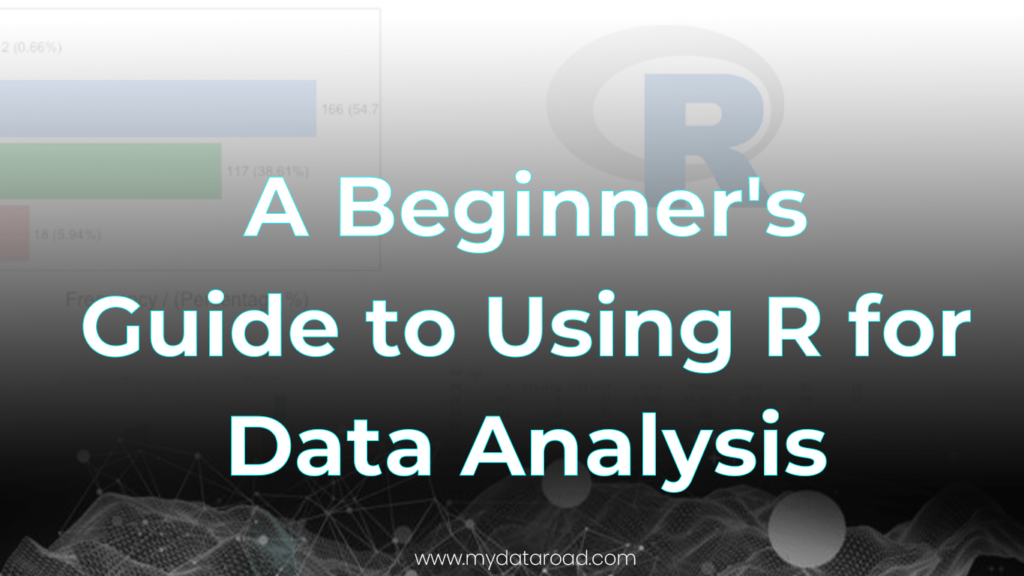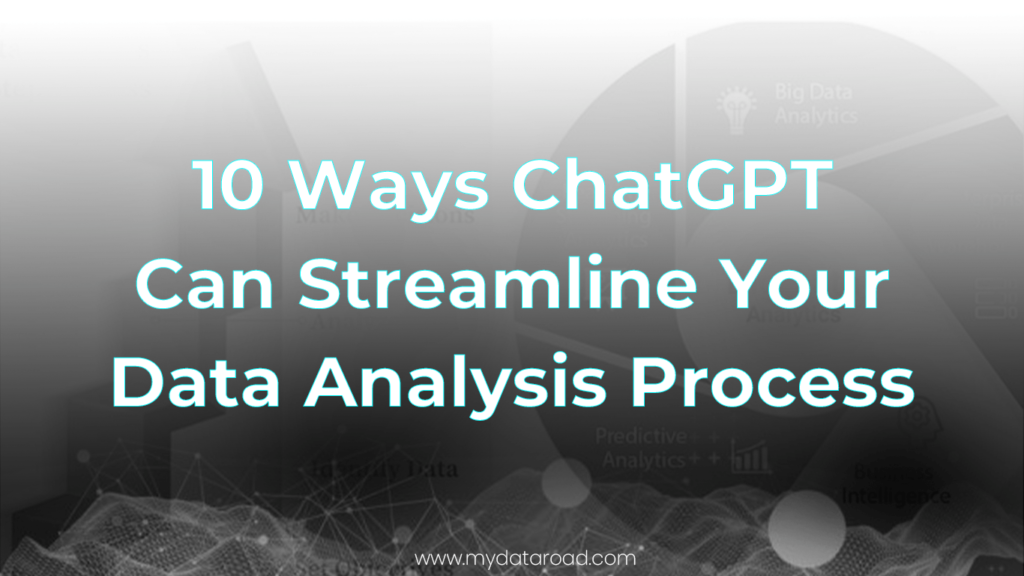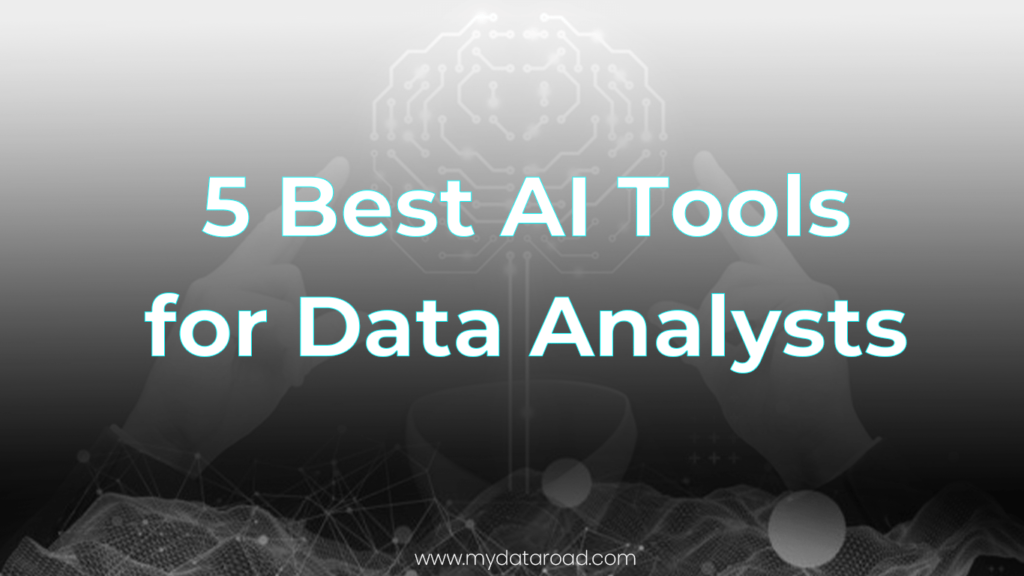A Beginner’s Guide to Using R for Data Analysis
R is a powerful programming language that is becoming increasingly popular among data analysts and scientists. It is a free, open-source software that is widely used for statistical computing and graphics. With its wide range of packages and tools, R is an excellent choice for data analysis, visualization, and modeling.
A Guide to Using R for Data Analysis is an essential resource for anyone who wants to learn how to use R for data analysis. It provides a comprehensive overview of R and its capabilities, as well as step-by-step instructions for working with data in R. The guide covers everything from basic data manipulation to advanced statistical modeling, making it a valuable resource for both beginners and experienced data analysts.
Whether you are a student, a researcher, or a professional data analyst, learning how to use R for data analysis can help you gain insights into complex data sets and make better decisions. With its powerful capabilities and user-friendly interface, R is quickly becoming the go-to tool for data analysis and visualization. A Guide to Using R for Data Analysis is an excellent starting point for anyone who wants to learn how to use this powerful programming language for data analysis.
Getting Started with R
R is an open-source programming language that is widely used for data analysis. It is a powerful tool for statistical computing and graphics.
Here are some steps to get started with R.
Installing R
Before you can start using R, you need to install it. R is available for free download from the Comprehensive R Archive Network (CRAN). You can download and install R on your computer by following the instructions on the CRAN website.
R IDEs
There are several Integrated Development Environments (IDEs) available for R. An IDE is a software application that provides a comprehensive environment for developing and running code. Some popular IDEs for R are:
RStudio
RStudio is one of the most popular IDEs for R. It is a free and open-source IDE that provides a user-friendly interface for writing and running R code. RStudio has several features that make it a great choice for data analysis, such as:
- Code editor with syntax highlighting and auto-completion
- Built-in console for running R code
- Integrated graphics and data viewer
- Package manager for installing and managing R packages
- Project management tools for organizing your work
RStudio is available for Windows, Mac, and Linux. You can download and install RStudio from the RStudio website.
In conclusion, getting started with R is easy. You need to install R on your computer and choose an IDE to work with. RStudio is a popular choice for data analysis because of its user-friendly interface and powerful features.
Basics of R Programming
R is a popular programming language for data analysis and statistical computing. This section covers the basics of R programming, including R code syntax, vectors and data types, functions, and loops.
R Code Syntax
R code syntax is similar to other programming languages. The basic structure of an R program is a sequence of commands or expressions. R code is case-sensitive and uses semicolons to separate statements. Comments in R start with the hash symbol (#).
Vectors and Data Types
In R, a vector is a collection of elements of the same data type. R has several built-in data types, including numeric, character, logical, and complex. Numeric data types can be integers or decimals. Character data types are used for text data. Logical data types can have only two values, TRUE or FALSE. Complex data types are used to represent complex numbers.
Functions
Functions in R are used to perform specific tasks. R has many built-in functions, and users can also create their own functions. Functions take arguments as input and return a value as output. In R, functions are called using the function name followed by parentheses containing the arguments.
Loops
Loops in R are used to repeat a set of instructions multiple times. R has two types of loops, for loops and while loops. For loops are used to iterate over a sequence of values, while loops are used to repeat a set of instructions while a condition is true.
In conclusion, understanding the basics of R programming is essential for data analysis and statistical computing. R code syntax, vectors and data types, functions, and loops are fundamental concepts that every R programmer should know. With this foundation, users can build more complex programs and analyze data more efficiently.
Data Analysis with R
R is a powerful programming language used for data analysis, data visualization, and statistical computing.
In this section, we will explore some of the key features of R for data analysis.
Importing Data
Before data analysis can begin, data must be imported into R. Data can be imported from a variety of sources, including:
- CSV files
- Excel spreadsheets
- databases
R provides several packages for importing data, such as readr, readxl, and DBI.
Data Frames
Data frames are a fundamental data structure in R. They are two-dimensional tables that can store different types of data. Data frames are used extensively in data analysis and manipulation. R provides several functions for working with data frames, such as head, tail, and summary.
Data Cleaning
Data cleaning is the process of identifying and correcting errors in data. R provides several packages for data cleaning, such as dplyr, tidyr, and stringr. These packages provide functions for removing missing values, handling outliers, and transforming data.
Data Filtering
Data filtering is the process of selecting a subset of data based on certain criteria. R provides several functions for data filtering, such as filter, select, and arrange. These functions can be used to subset data based on specific conditions, select specific columns, and arrange data in a specific order.
Data Ordering
Data ordering is the process of arranging data in a specific order. R provides several functions for data ordering, such as arrange, order, and rank. These functions can be used to sort data based on specific columns, order data in ascending or descending order, and rank data based on specific criteria.
In summary, R provides a powerful set of tools for data analysis, including data import, data frames, data cleaning, data filtering, and data ordering. By mastering these tools, data analysts can gain valuable insights from their data and make informed decisions based on their findings.
Data Manipulation with dplyr
Introduction to dplyr
dplyr is a powerful R package that provides a grammar of data manipulation. It offers a set of consistent verbs that allow users to solve common data manipulation challenges. These verbs include select(), filter(), arrange(), mutate(), summarize(), and group_by().
One of the biggest advantages of dplyr is its speed. The package is designed to work with large datasets, and it can perform operations significantly faster than base R functions.
Filtering and Selecting Data
Filtering and selecting data are two of the most common data manipulation tasks. The filter() function allows users to select rows based on specific criteria. For example, users can filter rows based on a specific value in a column or select rows that meet a certain condition. The select() function, on the other hand, allows users to select specific columns from a dataset.
Grouping and Summarizing Data
Grouping and summarizing data are essential tasks in data analysis. The group_by() function allows users to group data based on one or more variables. Once the data is grouped, users can use the summarize() function to calculate summary statistics for each group.
Derived Columns
Derived columns are new columns that are created based on existing columns in a dataset. The mutate() function allows users to create new columns by applying a function to existing columns. For example, users can create a new column that calculates the difference between two existing columns.
In summary, dplyr is a powerful package that provides a consistent set of verbs for data manipulation. It can perform operations faster than base R functions and is designed to work with large datasets. By mastering the functions provided by dplyr, data scientists can efficiently manipulate data and extract valuable insights.
Related Article: The Complete Roadmap to Become a Professional Data Scientist
Data Visualization with ggplot2
Introduction to ggplot2
ggplot2 is a data visualization package for R that is based on the Grammar of Graphics. It allows users to create a wide range of visualizations, including scatter plots, line graphs, bar charts, and more. ggplot2 is highly customizable, allowing users to adjust the aesthetics of their plots to match their needs.
Creating Basic Plots
To create a basic plot in ggplot2, users first need to specify the data they want to visualize. This is done by passing a data frame to the ggplot() function. The aes() function is then used to specify the variables that will be used to create the plot. For example, to create a scatter plot of two variables, x and y, users would pass the following code:
ggplot(data = my_data, aes(x = x, y = y)) +
geom_point()
This code creates a scatter plot of the x and y variables in the my_data data frame. The geom_point() function is used to specify that the plot should be a scatter plot with points.
Customizing Plots
ggplot2 allows users to customize their plots in a variety of ways. For example, users can adjust the color, size, and shape of points in a scatter plot using the color, size, and shape arguments in the aes() function:
ggplot(data = my_data, aes(x = x, y = y, color = category, size = value, shape = shape)) +
geom_point()
This code creates a scatter plot with points that are colored by the category variable, sized by the value variable, and shaped by the shape variable.
Users can also add additional layers to their plots, such as lines or text, using the geom_line() and geom_text() functions, respectively. For example, to add a line to a scatter plot, users would pass the following code:
ggplot(data = my_data, aes(x = x, y = y)) +
geom_point() +
geom_line()
This code creates a scatter plot with points and a line connecting the points.
Overall, ggplot2 is a powerful tool for data visualization in R, allowing users to create a wide range of visualizations that are highly customizable.
Statistics and Regression Analysis with R
R is a powerful tool for statistical analysis and regression modeling. It offers a wide range of functions and libraries that enable users to perform various types of statistical analyses, including descriptive and inferential statistics, as well as regression analysis.
Descriptive Statistics
Descriptive statistics is a way of summarizing and describing the main features of a dataset. R provides a variety of functions for calculating descriptive statistics, such as mean, median, mode, standard deviation, and variance. These functions can be applied to a single variable or multiple variables in a dataset.
For example, the summary() function provides a summary of the minimum, maximum, median, mean, and quartiles of a variable. The cor() function can be used to calculate the correlation between two variables in a dataset.
Inferential Statistics
Inferential statistics is a way of making inferences about a population based on a sample. R provides a variety of functions for performing inferential statistics, such as hypothesis testing, confidence intervals, and ANOVA.
For example, the t.test() function can be used to perform a t-test to compare the means of two groups in a dataset. The chisq.test() function can be used to perform a chi-square test to test the independence of two categorical variables.
Regression Analysis
Regression analysis is a way of modeling the relationship between a dependent variable and one or more independent variables. R provides a variety of functions for performing regression analysis, such as linear regression, logistic regression, and generalized linear models.
For example, the lm() function can be used to perform linear regression to model the relationship between a dependent variable and one or more independent variables. The glm() function can be used to perform generalized linear models, which can model the relationship between a dependent variable and one or more independent variables when the dependent variable is not normally distributed.
In conclusion, R is a powerful tool for statistical analysis and regression modeling. It provides a wide range of functions and libraries that enable users to perform various types of statistical analyses, including descriptive and inferential statistics, as well as regression analysis.
Machine Learning with R
Introduction to Machine Learning
Machine learning is the process of training an algorithm to make predictions or decisions based on data. R is a powerful tool for machine learning because it has many packages that can be used to build and evaluate models. In addition, R has a large community of users who contribute packages and share their knowledge.
Decision Trees
Decision trees are a popular machine learning algorithm because they are easy to understand and interpret. A decision tree is a tree-like model where each internal node represents a test on an attribute, each branch represents the outcome of the test, and each leaf node represents a class label.
In R, the rpart package can be used to build decision trees. The rpart.plot package can be used to visualize the decision tree.
Random Forests
Random forests are an ensemble learning method that combines multiple decision trees to improve the accuracy of the model. A random forest builds multiple decision trees on random subsets of the data and averages the predictions of the individual trees.
In R, the randomForest package can be used to build random forests. The varImpPlot function can be used to visualize the importance of each variable in the model.
Support Vector Machines
Support vector machines (SVMs) are a powerful machine learning algorithm that can be used for classification or regression. SVMs find the hyperplane that maximizes the margin between the two classes.
In R, the e1071 package can be used to build SVMs. The svm function can be used to train the model, and the plot function can be used to visualize the decision boundary.
Overall, R is a powerful tool for machine learning, and it has many packages that can be used to build and evaluate models. Decision trees, random forests, and support vector machines are just a few of the many algorithms that can be implemented in R.
Real-World Examples and Applications
R is a versatile tool that can be used in various industries. It can help professionals analyze data, build predictive models, and make informed decisions. Some of the real-world examples of R applications are in healthcare, marketing, and finance.
Healthcare
In healthcare, R can be used to analyze patient data, build predictive models, and improve patient outcomes. For example, R can be used to analyze electronic medical records to identify patterns and trends in patient data. It can also be used to build predictive models to identify patients who are at risk of developing certain conditions or diseases. R can also be used to analyze clinical trial data to determine the effectiveness of new treatments.
Marketing
In marketing, R can be used to analyze customer data, build predictive models, and improve marketing campaigns. For example, R can be used to analyze customer behavior data to identify patterns and trends in customer behavior. It can also be used to build predictive models to identify customers who are most likely to make a purchase. R can also be used to analyze marketing campaign data to determine the effectiveness of different marketing strategies.
Finance
In finance, R can be used to analyze financial data, build predictive models, and make investment decisions. For example, R can be used to analyze stock market data to identify patterns and trends in stock prices. It can also be used to build predictive models to identify stocks that are likely to perform well in the future. R can also be used to analyze financial risk data to determine the risk associated with different investment strategies.
Overall, R is a powerful tool that can be used in various industries to analyze data, build predictive models, and make informed decisions. Its versatility and flexibility make it a popular choice for professionals who need to work with data.
Related Article: How to Solve Data Analysis Problems in the Real World
R Packages and Documentation
When using R for data analysis, one of the most important aspects to consider is the selection of packages and documentation. R packages are collections of functions, data, and documentation that extend the capabilities of R. They can be installed and loaded into R to provide additional functionality for data analysis.
CRAN
The Comprehensive R Archive Network (CRAN) is the central repository for R packages. It contains thousands of packages that can be downloaded and installed directly from R. CRAN packages are typically well-documented and maintained by the R community, making them a reliable source for data analysis.
Tidyverse
Tidyverse is a collection of R packages designed for data science. It includes packages for data manipulation, visualization, modeling, and more. Tidyverse packages are built to work together seamlessly, making it easy to perform complex data analysis tasks with minimal code.
Documentation
Documentation is an essential aspect of using R for data analysis. It provides information on how to use R packages and functions, as well as examples of code and data sets. Documentation can be found on CRAN, as well as on package-specific websites and forums.
When selecting R packages, it is important to consider the quality and availability of documentation. Packages with well-documented functions and examples can save time and frustration when performing data analysis tasks.
In addition to package-specific documentation, R also includes built-in documentation. Users can access documentation for R functions and packages by using the ? operator followed by the function or package name.
Overall, selecting and utilizing R packages and documentation is essential for successful data analysis in R. By utilizing CRAN, Tidyverse, and available documentation, users can streamline their data analysis workflows and perform complex tasks with ease.
Using R for Data Analysis FAQ:
- What is R used for in data analysis?
R is a popular programming language used for statistical computing and graphics. It is widely used in data analysis, data visualization, and statistical modeling. - What are some common data analysis tasks in R?
Common data analysis tasks in R include data cleaning, manipulation, and visualization. R can also be used for statistical modeling, machine learning, and creating interactive web applications. - How do I install R on my computer?
To install R on your computer, you can download the latest version of R from the official website and follow the installation instructions. You will also need to install an Integrated Development Environment (IDE) such as RStudio to write and run your R code. - What are some useful R packages for data analysis?
Some useful R packages for data analysis include dplyr for data manipulation, ggplot2 for data visualization, and tidyr for data cleaning. Other popular packages include caret for machine learning and shiny for creating interactive web applications. - Can I import data from Excel into R?
Yes, you can import data from Excel into R using the readxl package. The readxl package allows you to read Excel files directly into R as data frames. - What are some useful resources for learning R?
Some useful resources for learning R include online tutorials, courses, and books. The official R website provides a wealth of resources for learning R, including manuals, documentation, and forums. Online courses such as DataCamp and Coursera also offer R courses for beginners and advanced users. - How can I create data visualizations in R?
You can create data visualizations in R using the ggplot2 package, which is a popular and powerful visualization library in R. ggplot2 allows you to create a wide range of static and interactive plots, such as scatter plots, bar charts, and line charts, with customizable aesthetics and themes.
What you should know:
- Our Mission is to Help you to Become a Professional Data Analyst.
- This Website is a Home for Data Analysts. Get our latest in-depth Data Analysis and Artificial Intelligence Lessons and Updates in your Inbox.

Tech Writer | Data Analyst | Digital Creator



